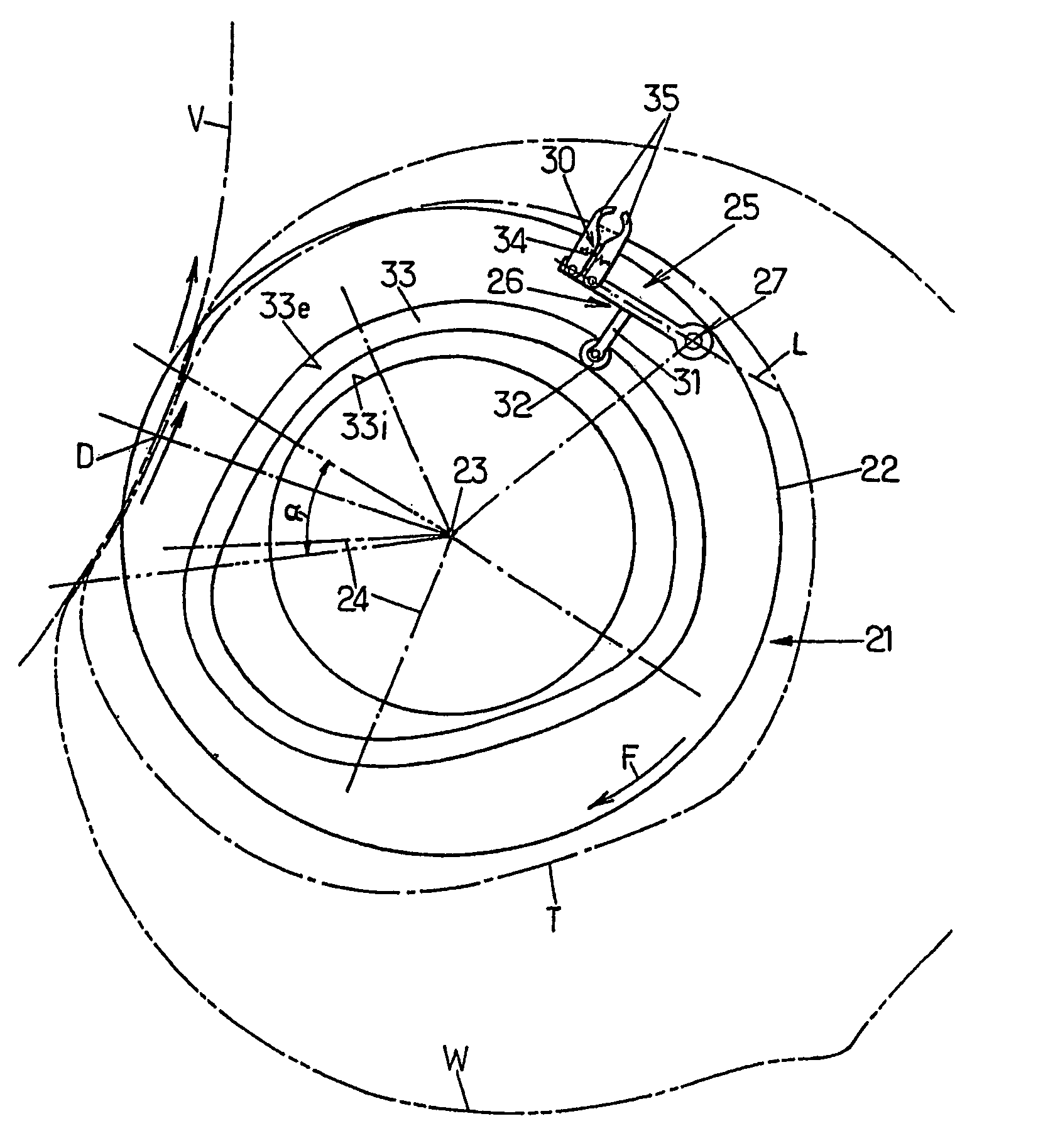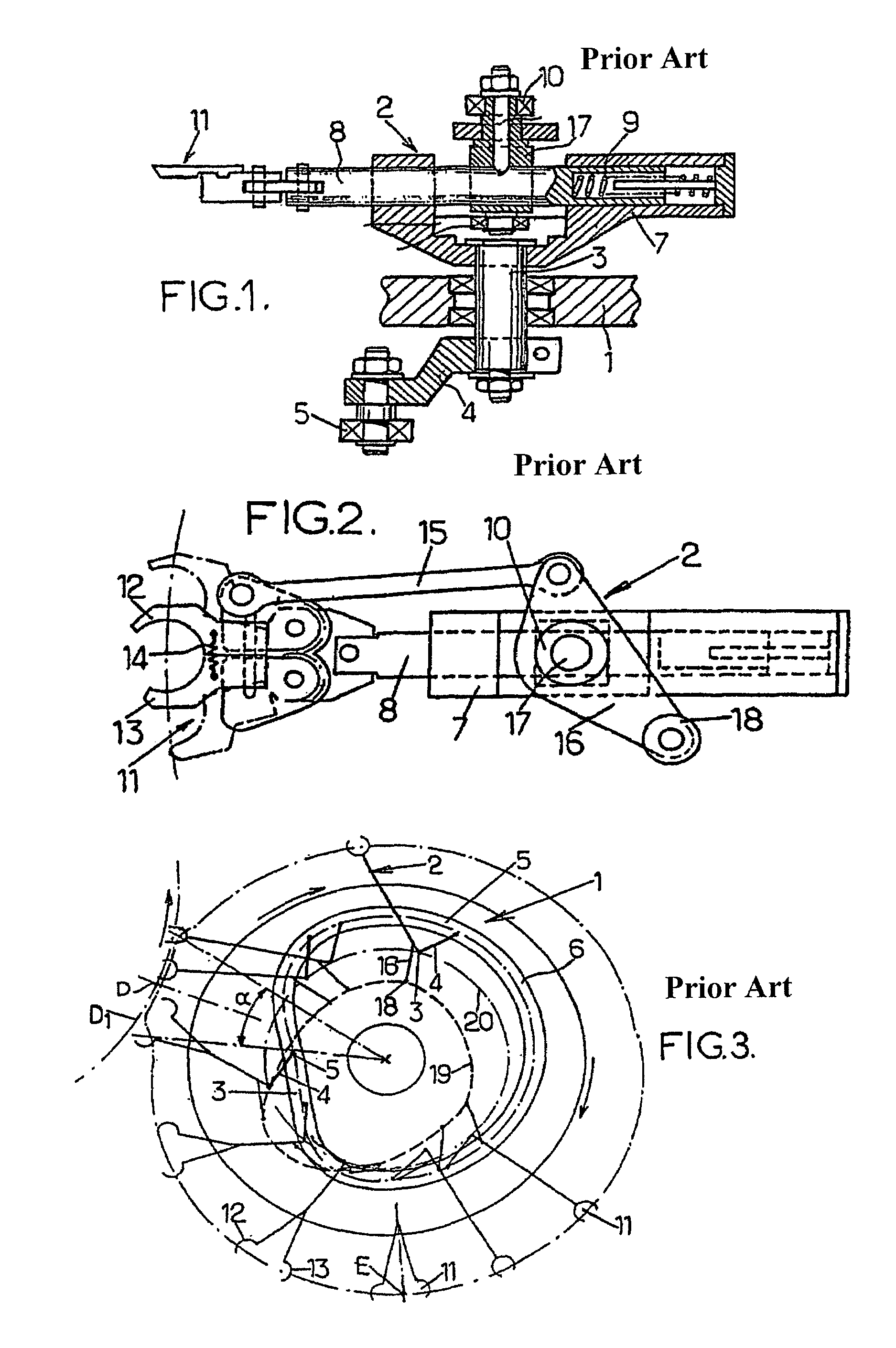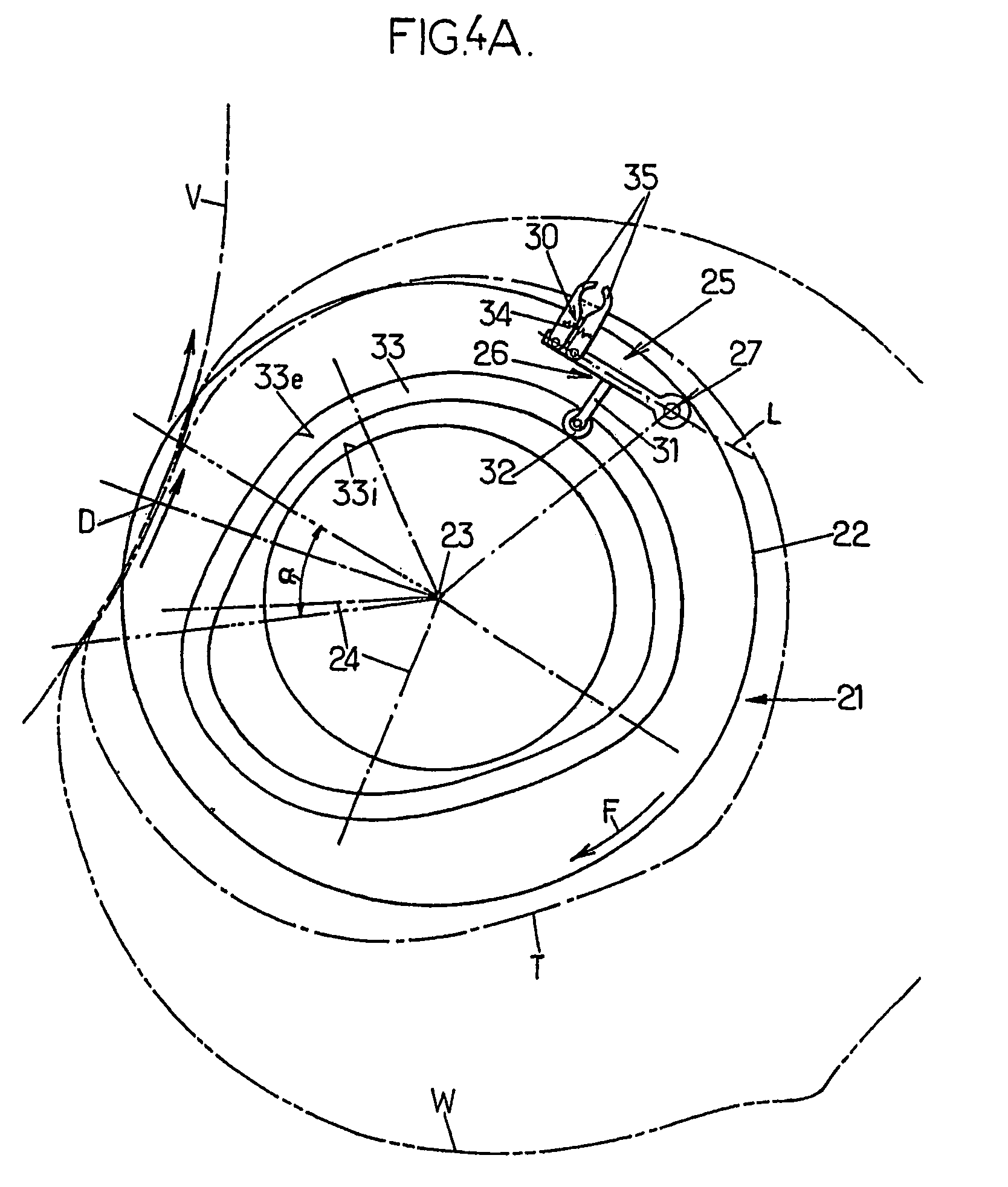Rotary device for transferring containers
a rotary device and container technology, applied in the direction of mechanical conveyors, conveyor parts, transportation and packaging, etc., can solve the problems of increasing the volume of the conveyor device, increasing the difficulty of manufacturing and requiring space, and generating vibration and noise, so as to reduce the number of cams, reduce the number of components, and simplify the structure
- Summary
- Abstract
- Description
- Claims
- Application Information
AI Technical Summary
Benefits of technology
Problems solved by technology
Method used
Image
Examples
Embodiment Construction
[0050]With reference to FIG. 4A initially, the conveyor device according to the invention has a rotary base 21 (corresponding to the rotary plate 1 of the prior art device) which can advantageously comprise a rotary plate 22 rotating about a vertical axis 23.
[0051]The plate 22 supports at least one mobile assembly 25 (and in practice a plurality of assemblies), which is designed as follows. A main arm 26 is supported pivotably on the plate 22 by means of a vertical shaft 27, the main arm 26 being capable of pivoting in a horizontal plane, substantially parallel to the plane of the plate 22. A gripping pincer 30 is mounted on the free end of the main arm 26, and this gripping pincer 30 extends approximately transversely to the arm 26. Finally, at least one freely rotating follower roller 32 is connected solidly to the main arm 26 and interacts with a fixed cam 33 having a curvilinear profile closed on itself about the axis 23. The roller 32 can be mounted at the end of a lever arm 31...
PUM
 Login to View More
Login to View More Abstract
Description
Claims
Application Information
 Login to View More
Login to View More - R&D
- Intellectual Property
- Life Sciences
- Materials
- Tech Scout
- Unparalleled Data Quality
- Higher Quality Content
- 60% Fewer Hallucinations
Browse by: Latest US Patents, China's latest patents, Technical Efficacy Thesaurus, Application Domain, Technology Topic, Popular Technical Reports.
© 2025 PatSnap. All rights reserved.Legal|Privacy policy|Modern Slavery Act Transparency Statement|Sitemap|About US| Contact US: help@patsnap.com



